Beatrice Waghalter (1913-2001)
Beatrice Waghalter, the second of Ignatz Waghalter’s two children, was born in Berlin on December 18, 1913.
The early years of Beatrice Waghalter’s life coincided with the period of her father’s greatest success as a conductor and operatic composer. Three of his major works, Mandragola (1914), Jugend (1917), and Sataniel (1923) were given their debut on the stage of the Deutsches Opernhaus.
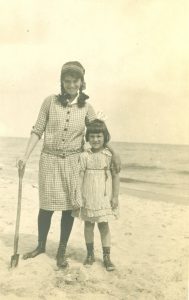
The position of Ignatz Waghalter in the musical life of Berlin provided his youngest daughter access to the city’s creative artistic milieu. The Waghalter apartment at 55 Konstanzer Strasse, in which Beatrice was born and which stands to this day, was frequented by many leading artists in Germany, such as the pianists Josef Hoffman and Leopold Godowsky, the director Max Reinhardt, and the tenors Richard Tauber and Leo Slezak. Also among those who regularly visited the family residence was Albert Einstein, who participated as an amateur violinist in an informal group of chamber musicians whom Waghalter accompanied on the piano.
Educated at the rigorous Hohenzollern Lyceum, where her classmates included the future international actress Lily Palmer, Beatrice Waghalter’s own gifts as a soprano soon attracted attention. In 1932 she was granted an audition before the teacher and composer Franz Schrecker, who approved her admission to the musical conservatory that he directed. With her fiery artistic temperament, exceptional musical sensibility, dramatic gifts and physical beauty, Beatrice Waghalter seemed destined to achieve a major role in the world of European light opera, which at that time enjoyed an immense popular following.
But the possibilities open to her were shattered by the political events of January 1933. Beatrice was the first in her family to recognize the danger that suddenly faced German Jews. She urged her parents to give up their apartment and go into exile. “One can, if conditions permit, decide to return,” Beatrice told them. “But one cannot always get out.” Ignatz Waghalter and his wife followed their daughter’s advice, and left Berlin for Prague in 1934. Subsequently they moved to Vienna and finally emigrated to the United States in 1937.
Beatrice initially accompanied her parents into exile. But she then decided to return to Germany and become active in the Jüdische Kultur Bund (Jewish Cultural Alliance), under whose auspices she performed before Jewish audiences throughout Germany. Beatrice presented herself as a diseuse, and in this capacity developed an impressive repertoire of international songs.
The young Waghalter’s performances met with enthusiastic critical acclaim, above all in Berlin itself, where Beatrice made her debut in April 1936. In its review of her performance, the Berliner Gemeindeblatt wrote:
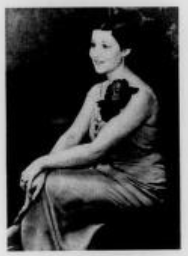
Now for the first time, after her triumphs in other cities, we have been given the opportunity to see and hear Beatrice Waghalter. One must emphasize: to see and to hear – for no less astounding than the breadth and expressive capacities of her voice are the dramatic qualities of her enchanting appearance. Oh, ears, eyes, heart, what more can you require?”
Beatrice Waghalter modestly calls herself a diseuse. But she has two significant advantages over most other, even world famous, diseuses: a full, thoroughly cultivated singing voice and her energetic youthfulness. She is able to put over coquettish folk songs and Grand Opera, self-parodying French songs and intimate Jewish hymns. She sings in eight languages: in German, English, Spanish, Czech, Italian, French, Yiddish, and Hebrew. It doesn’t seem that she has learned the words by rote; rather she performs in these languages in a manner that is staggeringly natural. She possesses the exceptional ability to sing in the form exactly appropriate to the national origins of each song.
With the multifaceted character of her art as a singer, Beatrice Waghalter won the affection and loyalty of the Berlin Jewish public, as was testified to by the ovations which called repeatedly for encores.
Beatrice’s final performance in Germany, before emigrating to the United States, took place in Hamburg in December 1937. In the one city where mass abhorrence of the Nazis still found open expression, it was possible for her to perform in a major theater. More than 2000 people attended her concert.
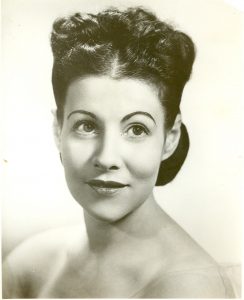
Arriving in the United States, Beatrice found herself in a popular culture that was radically different than that which she had known in Europe and for which she considered her talents ill-suited. Nevertheless, her linguistic skills made it possible for Beatrice to quickly master English, and she attempted to develop a new musical career in the United States. She achieved a degree of success, obtaining a weekly half-hour radio program in which she was featured as the “Viennese Nightingale.”
Fortunately, there exists a recording that attests to the beauty of Beatrice Waghalter’s voice and her remarkable talent. In a 1943 broadcast of The Viennese Nightingale, Beatrice sings two songs by the legendary Viennese composer and cabaretist, Hermann Leopoldi (1888-1959). Accompanied on the piano by her father, Beatrice sings (first in English and then in German) In einem kleinen Café and My Heart is in Vienna Tonight.
Beatrice Waghalter sings two songs by Hermann Leopoldi
But Beatrice felt out of place in a theatrical environment that bore little resemblance to that for which she had been trained. After her marriage in 1946 and the birth of her first child later that year, Beatrice withdrew from the theater.
But in 1950 she decided to resume her career. Her first public concert in New York City was held in May 1950. Beatrice included in her program songs from two works by Kurt Weill that were still largely unknown in the United States, The Three Penny Opera and Mahagonny. The power of her interpretation contributed to the awakening of broader American interest in Weill’s music. Subsequently, memorial concerts were organized to honor the late composer, who had died in 1950. Initially, Beatrice (now appearing under the stage name “Beatrice Lind”) was contracted to perform the celebrated “Barbara” and “Pirate Jenny” songs from the Three Penny Opera. At the last moment Lotte Lenya requested that she, as Weill’s widow, be allowed to perform these songs. The producers informed Lenya that they could not simply break their contractual obligation to Beatrice Lind, but Beatrice, sympathizing with Lenya, voluntarily stepped aside. She asked only that she be allowed to perform her favorite song from Weill’s Mahagonny.
In its review of the concert, The New York Times commented: “Also worthy of note among the ‘Mahagonny’ excerpts was the impressively sung ‘Wie man sich bettet, so liegt man,’ in which Miss Lind stopped the show and had to repeat the number.”
Among those who attended the concert was impresario Sol Hurok, who counseled Beatrice to rebuild her European reputation. She would rapidly find audiences appreciative of her gifts in Europe, he argued, and that would lay the foundation for a successful return to the United States.
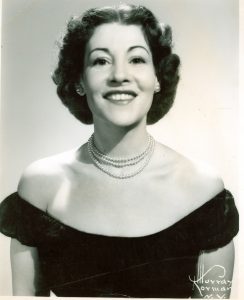
Beatrice traveled to Europe in November 1952. During the next year she lived in Amsterdam, where — as Hurok had predicted– she enjoyed great success. But the death of her husband in September 1953 led Beatrice to return to the United States. Following her remarriage and the birth of her third child, Beatrice left the stage. But in late 1957 she responded to an appeal from the CBS network to appear on the celebrated television program, Camera Three, in a musical recreation of the Berlin cabaret of the 1920s. Her performance established that there had been no decline in her talent.
To the very end of her long life, Beatrice Waghalter remained deeply devoted to the memory of her father and the unique culture which had nourished her own artistry. In March 1981 she traveled to Berlin to attend a commemoration at the Deutsche Operhaus of the centenary of her father’s birth. Speaking extemporaneously in a German, she reviewed the career of her father in the context of the tragedy that befell German Jewry. Eight years later, in April 1989, Beatrice again traveled to Berlin to hear a performance of Jugend staged by the Deutsche Oper.
Beatrice Waghalter died on October 18, 2001, just two months short of her 88th birthday. Her remains are interred in the Dorotheanstadt Friedhof in Berlin.
Beatrice was among the last surviving representatives of the generation of German-Jewish artists that developed in the intellectual atmosphere of pre-1933 Berlin. Forced to flee their cultural homeland by the Nazi seizure of power, these artists carried into exile, and preserved for the rest of their lives, the heritage of the central European culture in which they had been steeped during their youth.
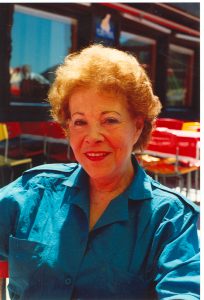
Leave a Reply
You must be logged in to post a comment.